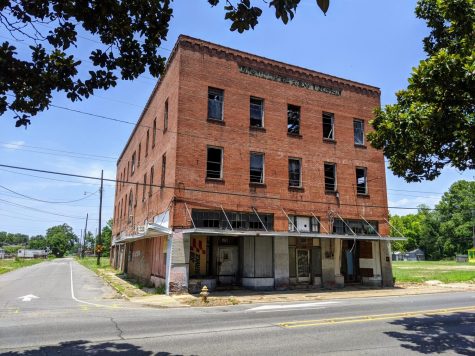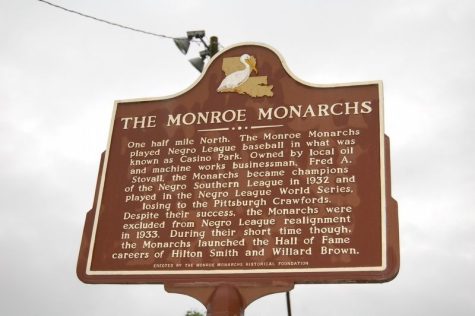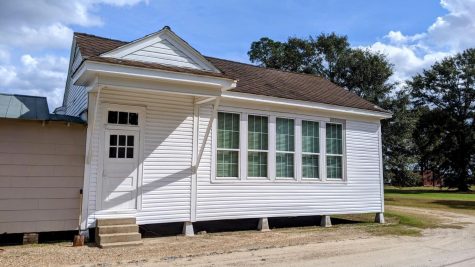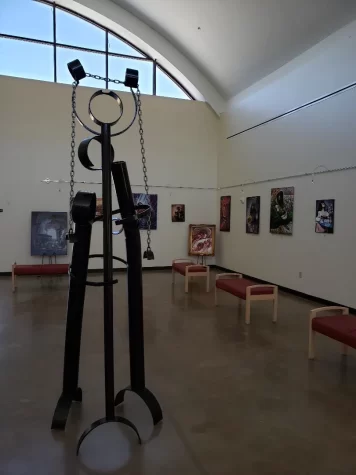Monroe sites with rich African American history
January 30, 2023

Miller-Roy Building
In the 1930s and ‘40s, the Miller-Roy Building was one of the most important buildings in northeast Louisiana for African Ameri- cans. The first floors held local businesses such as dentist offices, barber shops and a pharmacy. But the upper floors held a ballroom that was included on the famous Chit- lin’ Circuit that hosted artists such as Louis Armstrong, Ella Fitzgerald and Count Basie.
While the Miller-Roy Building is one of the most famous buildings in Monroe, it came close to being demolished 10 years ago. After the building was purchased by state Rep. Michael Echols, a renovation plan was enacted to bring the building back to its former state of prominence.
The bottom floor will house local nonprofits, and the other floor will have apartments for local residents to rent. Echols has stated that he plans to pay tribute to the legacy of the Miller-Roy Building and its importance to the African American community of Monroe by placing several memorials throughout the building.
Once the building opens to the community, it will serve as a place to educate future generations on African American history in Monroe.

Monroe Monarchs
When the Atlanta Braves went to the World Series in 1991, stories came out about how this was the first professional baseball team from below the Mason-Dixon line to compete for a championship. In reality, this title belongs to a team from Louisiana—the Mon- roe Monarchs.
The Monarchs played in the Negro Leagues between the late 1920s and 1935. In 1932, the Monarchs won the Southern League pennant and competed for a Negro League championship against the Pittsburgh Craw- fords. Monroe was unsuccessful in winning a championship that year, but the trip alone helped solidify the team’s importance in the major leagues.
The Monarchs played home games at Casino Field, which was rebuilt for the Carroll Bulldogs to play baseball. The field was built by Fred Stovall, a local businessman, and served as a safe haven for both white and Black people to enjoy baseball at a time when race relations were tense. Monroe also acted as a starting point for hall of fame members such as Hilton Smith and Willard “Homerun” Brown.
Monroe no longer has a professional team of any sport, but the legacy of the Monarchs lives on through the history of baseball.

McHenry School
When Jim Crow laws and segregation were the law in the South, Booker T. Washington wanted to ensure that African American children had access to education. He and the president of Sears & Roebuck, Julius Rosenwald, crafted the Louisiana Rosenwald Schools idea.
Few of these schools remain left in the state, but one of them stands in Ouachita Parish.
The McHenry School was built in 1929 for African American children in the parish to gain an education. The school was one of eight Rosenwald Schools built in Ouachita Parish and is the only one remaining today.
Several of the schools were closed due to acts of violence, but most were shut down after the passing of Brown v. Board of Education allowed African American students to attend school with white students.
The McHenry school, like all the other Rosenwald Schools in Louisiana, is not currently listed as a historic site with the National Register of Historic Places, but there are movements to change that.
If the schools gain a listing as a historic site, it will protect the buildings from future demolition and will lend money to the state for their upkeep.

African American Heritage Museum
Founded in 1994, the Northeast Louisiana Delta African Heritage Museum is Monroe’s home to African American history. Located near the Pecanland Mall, the museum allows visitors to learn about the Civil Rights movements’ art and music and their effects on African Americans in northeast Louisiana.
The museum hosts seminars, research and art exhibits throughout the year, giving visitors something new to learn each time they visit. It also frequently hosts open mic poetry nights for local artists to showcase their writings.
The African Heritage Museum is essential to Monroe’s African American history, as each exhibit and piece of art portrays the story of African Americans in the Monroe area. The museum’s mission is dedicated to preserving and promoting African American culture and art.
Monroe’s rich African American history is displayed at the museum to teach everyone aspects that are often forgotten. During February, the museum showcases exhibits that spotlight different aspects of African American history for Black History Month.



BT Owens • Apr 9, 2025 at 5:40 pm
The phenomenal artwork, including the sculpture, displayed on the walls and on the stand in the picture from the African American Museum is by renowned international artist, Don Cincone.